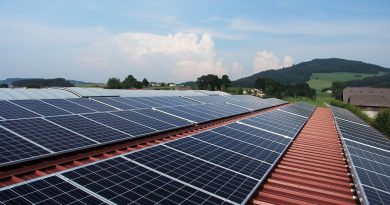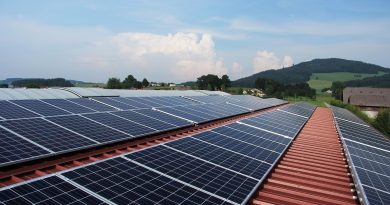Rooftop Solar Plants in India: Assessing Success Rates
Rooftop solar plants have gained immense popularity in recent years, with India emerging as one of the world’s top countries in deploying this sustainable technology. The Indian government’s ambitious target of 40 gigawatts (GW) of rooftop solar installations not only depicts its commitment to clean energy, but also highlights the potential this sector holds. However, to truly understand how successful rooftop solar plants are in India, we need to explore their current status, benefits, challenges, and future prospects.
Current Status of Rooftop Solar Plants in India
India has made significant progress in the rooftop solar sector, with a cumulative capacity of over 5 GW as of March 2021. This figure accounts for around 15% of the country’s total solar capacity. Several states, including Tamil Nadu, Maharashtra, Karnataka, Gujarat, and Rajasthan, have emerged as frontrunners in rooftop solar installations.
The government’s various policies and incentives, such as net metering and subsidies, have played a crucial role in encouraging individuals, businesses, and industries to adopt rooftop solar plants. Additionally, third-party investment models and the availability of affordable financing options have made it easier for consumers to transition to clean energy.
Benefits of Rooftop Solar Plants
Rooftop solar plants offer numerous advantages, making them a promising solution for India’s energy needs. Firstly, they enable consumers to generate electricity locally, reducing dependence on centralized power grids and minimizing transmission losses. This distributed generation model enhances grid stability and resilience, especially in areas prone to frequent power outages.
Furthermore, rooftop solar plants contribute to reducing greenhouse gas emissions and combating climate change. Since solar energy is renewable and clean, it helps mitigate environmental pollution and conventional energy consumption. India’s rooftop solar sector can significantly contribute to the country’s commitment to reducing carbon intensity by 33% to 35% by 2030, as outlined in its Nationally Determined Contributions (NDCs).
Moreover, rooftop solar plants enable consumers to save on electricity bills. By harnessing the sun’s energy, individuals and businesses can offset their electricity consumption, leading to substantial savings over the system’s lifespan. This economic benefit has been a key driver of rooftop solar installations in residential, commercial, and industrial sectors across India.
Challenges in Scaling Up Rooftop Solar Plants
While rooftop solar plants have shown promise, there are several challenges that need to be addressed to fully unlock their potential. The lack of awareness and understanding among consumers remains a primary obstacle. Many potential adopters are unaware of the benefits and cost-effectiveness of rooftop solar plants or simply lack the technical knowledge required for installation and maintenance. Government initiatives focusing on awareness campaigns and capacity-building programs can help bridge this gap.
Another challenge lies in the complex administrative procedures and paperwork associated with rooftop solar installations. Obtaining approvals, permits, and interconnection agreements can be time-consuming and complicated, discouraging potential investors and consumers. Streamlining these processes through digitization and simplification efforts would encourage more people to adopt rooftop solar plants.
Financing is also a significant hurdle. While costs of rooftop solar installations have significantly reduced over the years, the initial investment remains a barrier for many. Access to affordable financing options and the incorporation of innovative financing models, such as leasing and power purchase agreements, can alleviate this challenge and accelerate the adoption of rooftop solar plants.
Future Prospects
Despite the challenges, the future of rooftop solar plants in India looks promising. The government’s commitment to clean energy, demonstrated through favorable policies and incentives, will continue to drive growth in the sector. The falling prices of solar panels and advancements in technology will further enhance the cost-effectiveness and efficiency of rooftop solar plants.
Additionally, as awareness increases and more success stories emerge, the demand for rooftop solar plants is likely to soar. State governments can play a crucial role by implementing supportive regulatory frameworks and simplifying administrative processes. Integration of energy storage solutions with rooftop solar plants can also enhance the reliability and stability of the distributed generation model.
Moreover, the solar industry’s growing ecosystem, including solar component manufacturing and solar service providers, will create employment opportunities and foster economic growth. This, coupled with the environmental benefits, makes rooftop solar plants an attractive proposition for businesses and homeowners alike.
Conclusion
Embark on your solar journey with SolarClue®! Rooftop solar plants are gaining significant traction in India, offering benefits like local generation, reduced carbon emissions, and substantial cost savings. At SolarClue®, we recognize the immense potential of rooftop solar and provide solutions that address challenges related to awareness, administrative procedures, and financing. Now is the time to scale up your rooftop solar installations with SolarClue® by your side.
The future of rooftop solar plants in India looks promising, thanks to the government’s commitment to clean energy, decreasing costs, and technological advancements. As the sector matures, rooftop solar plants are set to play a crucial role in India’s sustainable energy transition. Be part of this revolution with SolarClue®—your trusted partner in solar solutions.
With ongoing support, increased awareness, and collaboration between stakeholders, rooftop solar plants have the power to revolutionize India’s energy landscape and contribute to global climate change mitigation efforts. Explore the possibilities with SolarClue®—your gateway to a sustainable and solar-powered future!”
Frequently Asked Questions
Factors include quality components, proper installation, government policies, maintenance practices, and solar resource potential.
Performance is measured by consistent energy production, adherence to standards, return on investment, and meeting performance expectations.
Supportive policies and incentives significantly contribute to the widespread adoption of rooftop solar plants.
Challenges may include regulatory complexities, financing barriers, and regional variations in solar resource availability.
Professionals can conduct a site assessment considering factors like roof orientation, shading, and local climate.
Yes, monitoring tools track energy production, identify issues, and ensure optimal system performance.
Yes, regular maintenance, including cleaning and addressing issues promptly, is crucial for long-term efficiency.
Choosing reputable manufacturers and certified installers, along with understanding warranty terms, ensures component reliability.
Yes, with favorable conditions and proper design, users can achieve a positive return on investment through reduced bills and potential income.
Yes, regional differences exist due to variations in solar irradiance, climate, and local policies. Assessments should consider specific regional factors.




